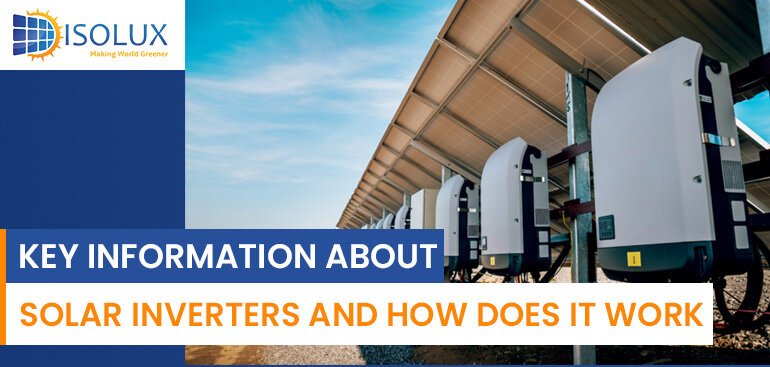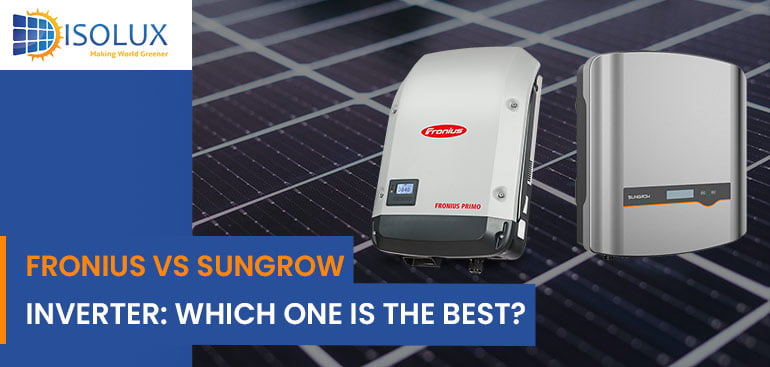At Isolux, we are committed to providing you with the most up-to-date information on solar power solutions. In this comprehensive guide, we will delve into the world of 3 phase solar inverters, shedding light on their advantages, applications, and how they can help you optimize your solar power system for maximum efficiency.
What is a 3-Phase Solar Inverter?
Single-phase power is the more common type of power used in residential areas, which consists of two wires – an active and a neutral – that connect from the local transformer to the home. The active cable supplies power at a standard voltage of 240V, which is sufficient for most household appliances in Australia.
On the other hand, three-phase power consists of four wires – three actives and a neutral. It is capable of supplying power at both 240V and 415V, which is required by appliances that demand higher power, such as certain types of air conditioners. With three-phase power, the available power is effectively tripled as the appliances can be distributed across each of the three phases.
Advantages of 3-Phase Solar Inverters
High Power Output: 3-phase solar inverters are capable of producing higher power output than single-phase inverters. This makes them an ideal choice for larger solar power installations, such as commercial and industrial buildings.
Efficient Power Distribution: The three-phase output of these inverters can be synchronized with the utility grid for efficient power distribution. This helps to reduce energy losses and ensures that the solar power system operates at its maximum potential.
Better Load Management: 3-phase solar inverters allow for better load management, as the power can be distributed across the three phases. This means that appliances can be balanced across the phases, resulting in a more stable and reliable power supply.
Flexibility: 3-phase solar inverters offer greater flexibility in terms of system design and configuration. They can be connected to multiple solar panels and can handle a wide range of power inputs, making them adaptable to a variety of solar power system configurations.
Advanced Features: Many 3-phase solar inverters come with advanced features such as Maximum Power Point Tracking (MPPT), grid connection capabilities, and monitoring and control functions. These features help to optimize the performance of the solar power system and ensure efficient operation.
Application of 3-Phase Solar Inverters
3-phase solar inverters are widely used in various applications, including:
1. Commercial and industrial buildings
2. Large-scale solar power plants
3. Agriculture and farming operations
4. Residential homes with high energy requirements
5. Grid-tied solar power systems
6. Off-grid solar power systems
How to Choose the Right 3-Phase Solar Inverter for Your Needs
Selecting the right 3-phase solar inverter for your needs is crucial to ensuring the optimal performance and efficiency of your solar power system. Here are some key factors to consider when choosing a 3-phase solar inverter:
Power Output: The power output of a 3-phase solar inverter should match the power rating of your solar panels and the overall power demand of your property. It’s important to choose an inverter that can handle the maximum power load of your solar panels without overloading or underutilizing the inverter.
Efficiency: The efficiency of a 3-phase solar inverter determines how effectively it can convert DC electricity into AC electricity. Look for inverters with high efficiency ratings, as they can maximize the energy production of your solar power system and ultimately save you more on your electricity bills.
Durability and Reliability: Consider the durability and reliability of the 3-phase solar inverter. Look for inverters that are built with high-quality materials, have a robust design, and come from reputable manufacturers with a proven track record of producing reliable inverters.
Monitoring and Control Features: Advanced monitoring and control features can help you monitor the performance of your solar power system and optimize its efficiency. Look for inverters that offer comprehensive monitoring and control capabilities, such as real-time monitoring, remote troubleshooting, and data logging.
Compatibility with Battery Storage: If you plan to add battery storage to your solar power system in the future, ensure that the 3-phase solar inverter is compatible with battery storage systems. This can allow you to easily integrate a battery storage system into your solar power setup for better energy management and backup power during outages.
Warranty and Support: Consider the warranty and support offered by the manufacturer. Look for inverters that come with a substantial warranty period and reliable customer support to ensure that you have peace of mind and protection against any potential issues with the inverter.
Conclusion
In conclusion, a 3-phase solar inverter can be a wise choice for larger solar power systems, offering higher efficiency, greater power handling capacity, improved reliability, and flexibility in system design. When choosing a 3-phase solar inverter, consider factors such as power output, efficiency, durability, monitoring and control features, compatibility with battery storage, and warranty and support. By carefully selecting the right 3-phase solar inverter for your needs, you can optimize the performance and efficiency of your solar power system, leading to greater energy production, cost savings, and environmental benefits.
Get an obligation-free quote for a 3-phase solar inverter from Isolux Solar.
Read Next Blog:




